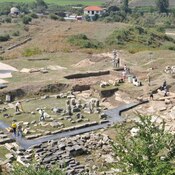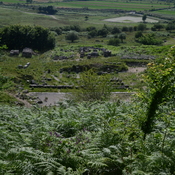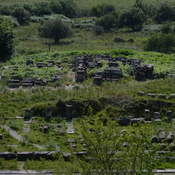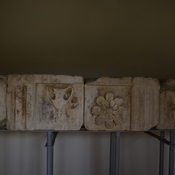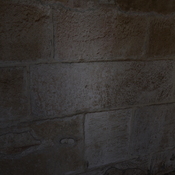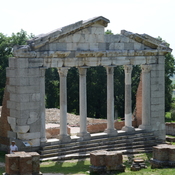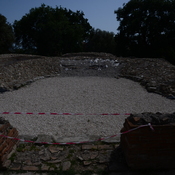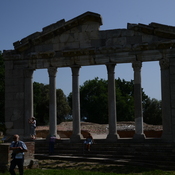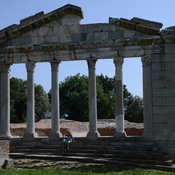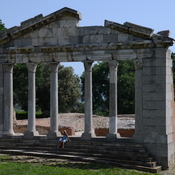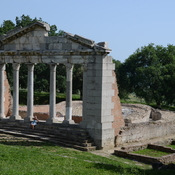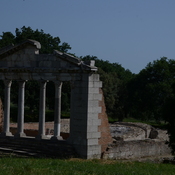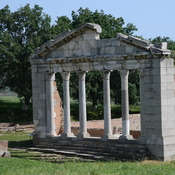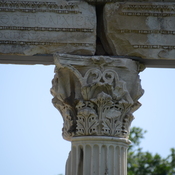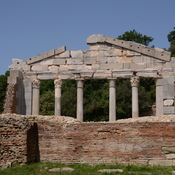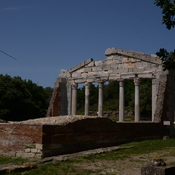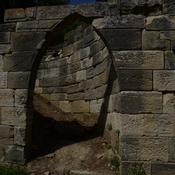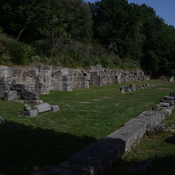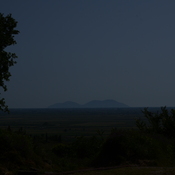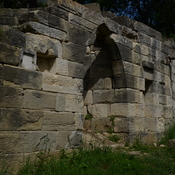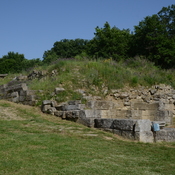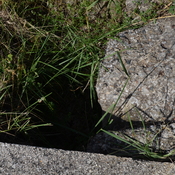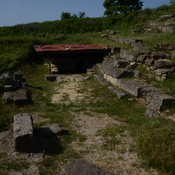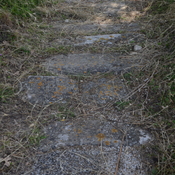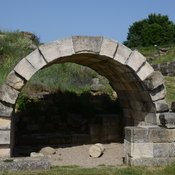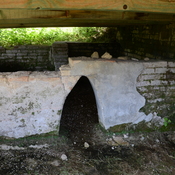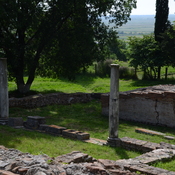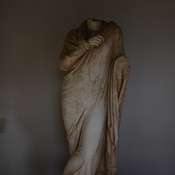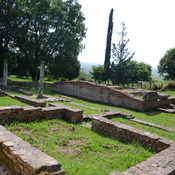In the 3rd century AD an earthquake changed the path of the Aoos River, causing the Apolionias harbour to silt up and the inland area to become a malaria-ridden swamp. The city became increasingly uninhabitable as the inland swamp expanded, and the nearby settlement of Avlona (modern-day Vlorë) became dominant. By the end of antiquity, the city was largely depopulated, hosting only a small Christian community. This community (which probably is part of the site of the old city) built on a nearby hill the church of the Dormition of the
Er zijn nog geen afbeeldingen met betrekking tot deze plaats toegevoegd.
Afbeelding toevoegen.
Afbeelding toevoegen.
Omgeving:
Locatie:
- Albanië, Sop
- geo:40.71899,19.465519
- Locatie precies
Period or year:
- -4xx / unknown
Classificatie:
- Werkplaats / industrie
- Niet zichtbaar
Identifiers:
- vici:place=33120
Annotaties
Er zijn nog geen Nederlandstalige annotaties. Hier volgen annotaties in het Engels.
In the 3rd century AD an earthquake changed the path of the Aoos River, causing the Apolionias harbour to silt up and the inland area to become a malaria-ridden swamp. The city became increasingly uninhabitable as the inland swamp expanded, and the nearby settlement of Avlona (modern-day Vlorë) became dominant. By the end of antiquity, the city was largely depopulated, hosting only a small Christian community. This community (which probably is part of the site of the old city) built on a nearby hill the church of the Dormition of the
Relevante musea
Apollonia, Archaeological Museum
Apollonia, Archaeological Museum
In de buurt
Apollonia, Thermae
Roman baths
Apollonia, Archaeological Museum
Apollonia, Archaeological Museum
Greek Road
Greek Road

